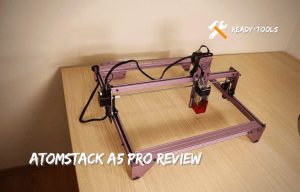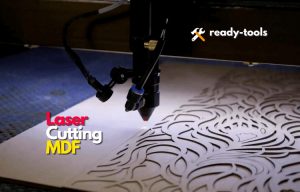In today’s world, many other methods are available, whether you want to print a certain logo, text, or patterns; nevertheless, screen printing is the most common approach. In addition to screen printing, one more way that has a flavor of contemporary technology: is laser marking.
One of the most common and important uses of laser processing is laser marking. The laser marking process involves irradiating a portion of the workpiece with a laser beam with a high energy density. This causes the surface material to be vaporized or its color to change due to a chemical reaction, which leaves a permanent marking.
You may need to engrave a design at some point, but you may be unsure of the most effective approach to use. Laser marking and screen printing are the two most common options. If you have both, you can draw a design and mark it on a metal surface. The following is further information on the two choices:
How Does Each One Operate?
Equipment for screen printing and laser marking is completely different from one another. The equipment for laser marking is more expensive than the equipment used for screen printing; nevertheless, laser marking requires fewer materials and less work.
Laser Marking Method:
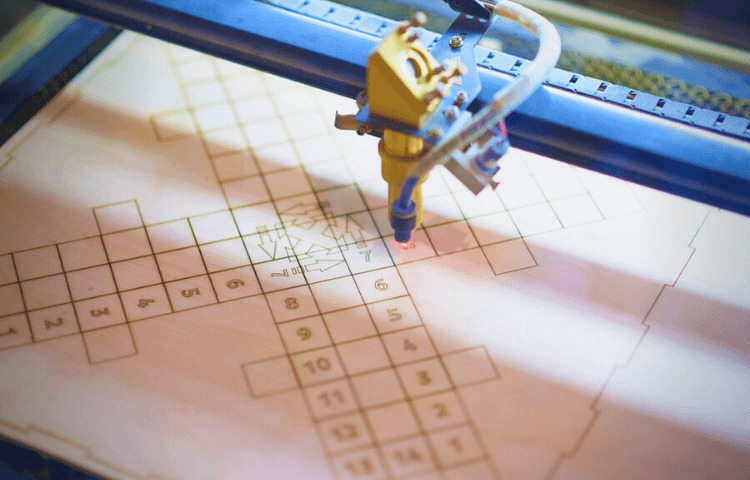
The process of laser marking involves removing or oxidizing a layer of the surface material using a laser beam. The beam may be directed in any direction by computer software in conjunction with directed mirrors.
The appearance and characteristics of the surface material are altered upon contact with the beam, which results in the creation of programmed patterns.
The use of laser marking allows for the production of a wide variety of designs, such as business logos, bar codes, dimensions, and intricate geometric shapes. You may reduce the strength of the laser to stain the surface or raise it to etch designs into the material.
Screen Printing Method:
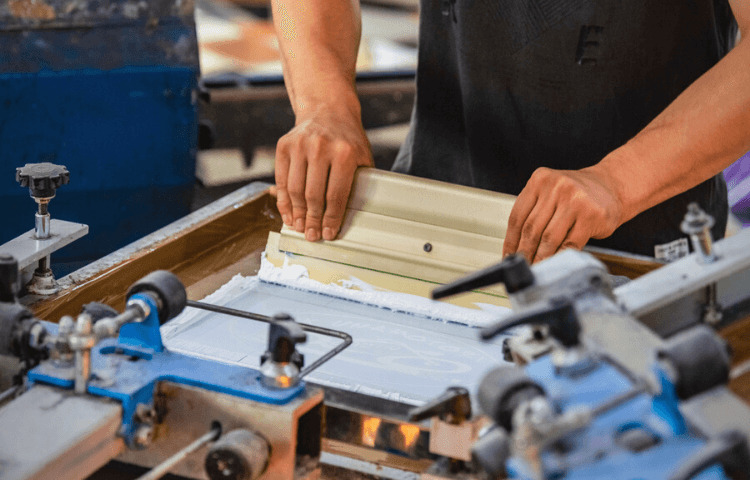
Ink marks the surface of the material during the screen printing process. Squeegees are used to press stencils made of mesh screens onto surfaces after first soaking the stencils in ink. After that, the material is put through a specialized drier that dries the ink permanently.
The ink in screen printing is not as long-lasting as in laser marking. Additionally, even though it may be layered to create a range of colors and patterns, it is not as exact. Because of this, its utility for industrial applications is significantly lower than that of laser marking.
The Benefits of Utilizing a Laser Marker:
- The focused laser beam functions similarly to a knife tool in that it can remove material from an object’s surface in discrete increments. One of the advantages of laser marking is that the process does not involve direct contact with the materials being processed. As a result, it does not result in mechanical extrusion or stress and does not cause any damage to the items being processed.
- Because the concentrated laser beam is incredibly small and delicate, the heated region is likewise very delicate; this contributes to the laser’s ability to do ultra-fine processing. As a result, laser marking enables the completion of some specialized works that are impossible with more traditional means.
- The processing of laser marking does not require any additional tools or components. As long as the laser is in good working order, it may continue to operate for an extended period.
- The laser branding process is quick and doesn’t cost very much. Because the computer automatically manages it, the entire manufacturing process may occur without the involvement of any humans, which results in significant savings in terms of the cost of labor.
- As long as the artwork designed on the computer can be located, the system that controls the laser marking machine can accurately mark and rebuild the layout on the suitable carrier.
The Disadvantages of Laser Marking:
When compared to more conventional methods of screen printing, the cost of the laser marking machine system is quite expensive. And there were others, like the CO2 laser marking machine, that could only mark on materials that were not metal. But these modest shortcomings could not prohibit sophisticated laser marking techniques from wider and wider usage in diverse sections of industry and daily operations.
The method of printing known as screen printing involves using a mesh to transfer ink onto a substrate, except for any regions that a stencil has blocked off to prevent the ink from reaching those places.
The Benefits of Utilizing Screen Printing:
- The most common type of printing can only be done on flat surfaces. In addition to printing on a flat and plane surface, screen printing can also print on surfaces with unusual shapes, such as spherical surface printing. Screen printing can produce nearly any type of print on virtually any surface.
- Screen printing can be regulated by strength very effectively; it would not give much stress to the printed surface. The printing technology is pliable and yielding in nature.
- We can print black color on the white surface and white color on the black surface using the screen printing technique.
- Inks of wide different varieties can be used for screen printing.
- The screen printing may be retained for a very long period without fading or color change. And would not be influenced by temperature and lighting, which makes stickers printing without adding extra film or other procedures.
- Screen printing allows for a wide variety of flexible and specialized printing processes thanks to its accompanying equipment.
- Making a screen mesh plate is simple and inexpensive, and screen printing is a technique that may be easily learned.
The Disadvantages of Screen Printing:
The labor cost is significant for screen printing since it requires workers to operate it from the beginning to finish. The ink that is used for screen printing is not very environmentally friendly.
Laser Marking Vs. Screen Printing: Influencing Factors
Screen printing and laser part marking are two techniques that are feasible options for marking materials in a wide variety of different applications. You must take into consideration the following key performance aspects to guarantee that you are employing the most appropriate strategy for your requirements:
The Material That Has to Be Marked:
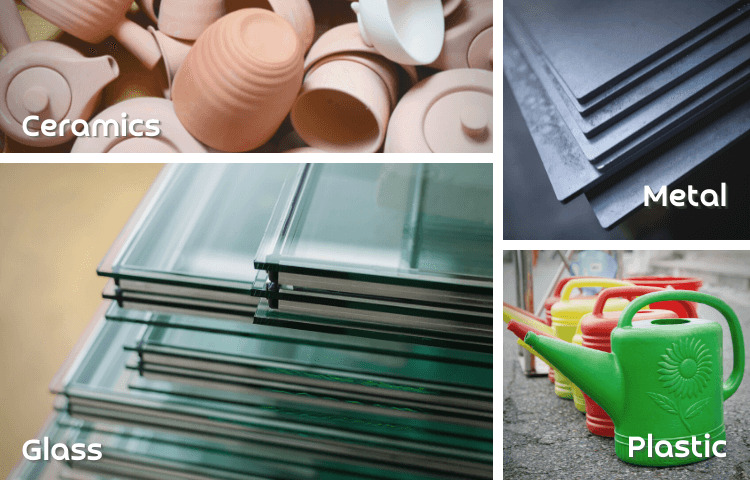
Even though it is not as long-lasting as laser marking, screen printing may be done on virtually any material, including cloth and industrial items. The versatility of laser marking makes it an excellent choice for industrial use. This technique may be used for various tough materials, such as metals, ceramics, plastics, and glass.
The Assignment of Colors:
The fact that ink is used to label materials means that silk screening may be done in an extremely diverse range of colors and patterns. Because laser marking involves removing a layer from the surface of the item being marked, the print color can only be the same as that of the substance that has been heated. This should be adequate to provide a visible and long-lasting mark for purposes in industrial settings.
Equipment and Training:
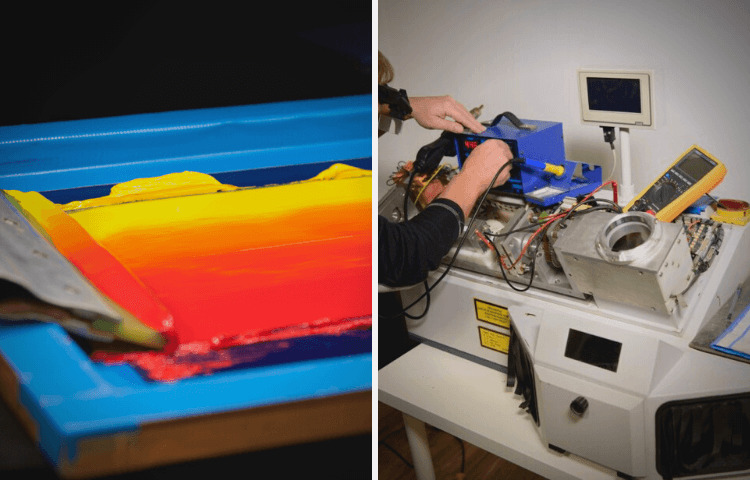
Although the equipment for silk screen printing is cheap and takes little training, the process is less accurate and involves a great deal of manual effort. Laser marking is superior in terms of speed, efficiency, and quality when it comes to applications in industry and production. In the long run, the lower manufacturing costs and materials make up for the initial investment in more expensive laser equipment.
Accuracy:
The equipment used for screen printing is notoriously difficult to calibrate for accurate marks. The equipment required for screen printing is not extremely exact, even though it may be utilized to make colorful designs. This technology is perfect for use in industrial production as the laser marking machine can be set to make incredibly subtle and intricate patterns with an exceptionally high degree of precision.
Versatility:
Screen printing could only be used to flat materials. Still, laser marking allows the user to print on several axes, achieving precise printing on surfaces that are either tiny or have an odd form.
Durability:
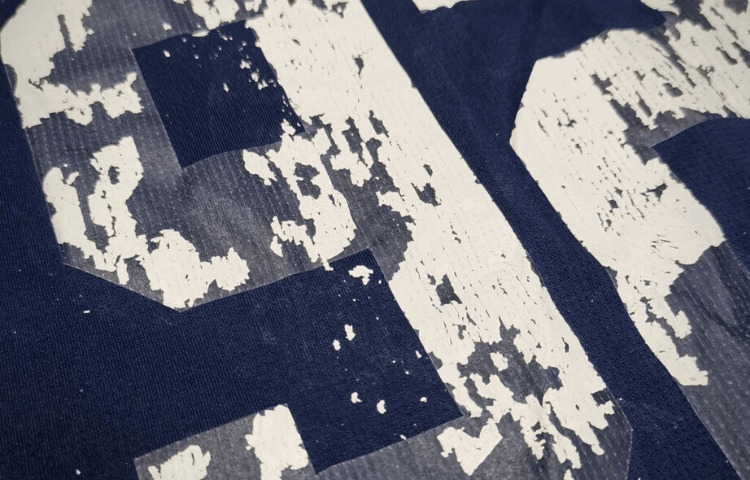
Because the ink used in screen printing adheres to the surface material and can rub off or be removed with prolonged rubbing or contact, this printing method is not ideal for surfaces that are likely to be subjected to abrasion or regular human touch. Etchings created by a laser cannot be removed by rubbing.
The Rate of Production as Well as the Amount:
The preparation and cleaning for silk screening are both quite involved processes. The use of a laser for marking, on the other hand, is highly automated and needs almost any time to be set up. After the specifications have been programmed into laser marking equipment, the marking will be finished in a matter of seconds. This is especially helpful for big production runs since it may drastically reduce production expenses.
Whether you own a home, a business, or are a student attending school, this tool set is an excellent investment for your office, home, garage, or shop. It may even be used in a dorm room.
Conclusion:
As was covered above, laser marking and screen printing are quite different processes with few similarities. We hope that by the time you finish reading this post on our blog, you will better know which procedure is most appropriate for the application you have in mind. We hope our blog comparing laser marking and screen printing was enjoyable for you.



